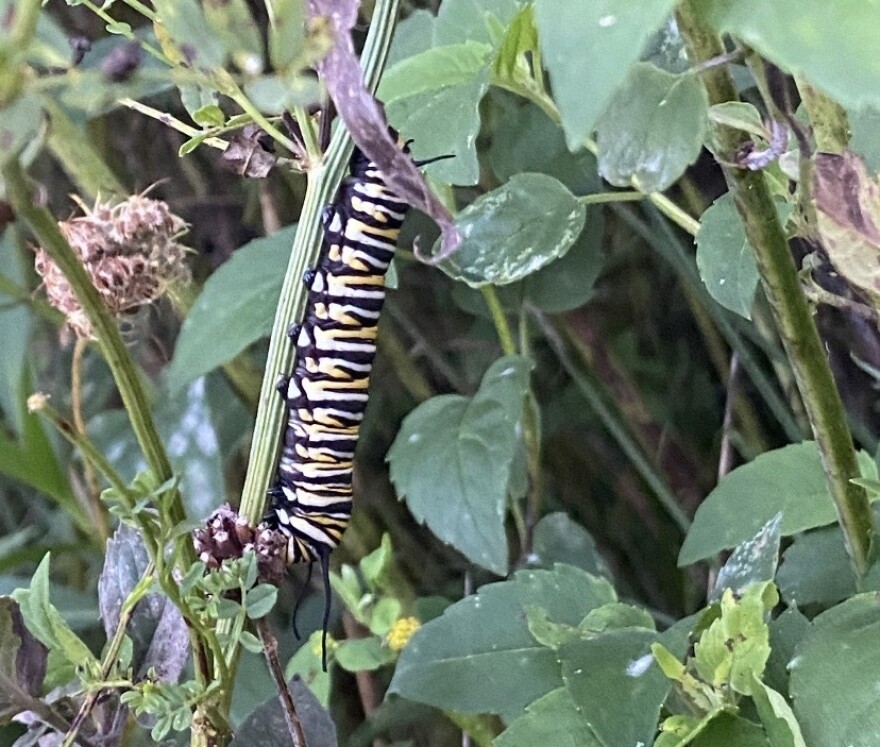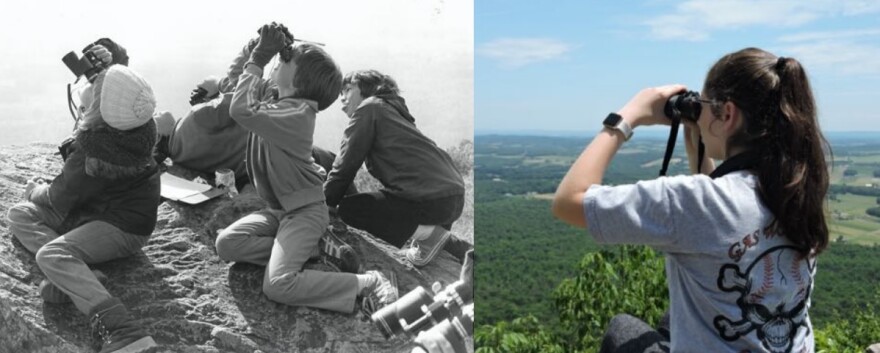BUSHKILL TWP., Pa. — It only took minutes Friday night for 6-year-old Michael Eckard to turn into a monarch butterfly.
“We'll turn him back into a human momentarily, but let's remember the parts of the butterfly,” said Lauren Forster, environmental education specialist at Jacobsburg Environmental Education Center. “What parts do you need to give Michael to turn him into a butterfly?”
As other children called out butterfly body parts, pieces were added to Michael’s costume — goggles to represent a monarch’s compound eyes, a set of bright orange and black wings, a black tube to represent the proboscis, or feeding tube, and a pair of black antennas.
Forster, as well as Megan Davis, a conservation volunteer, lead “Family Science Night: Monarch Madness” at the center, 400 Belfast Road. An annual tradition, educators take residents out into the wildflower fields surrounding the center each fall to catch and tag monarch butterflies before their annual migration south, part of a conservation effort to help bolster the threatened species.
While there were two monarch caterpillars spotted, Michael was the only full-grown monarch the group saw.
“I just wish that more monarchs had shown up, but migration seems to be a little bit later this year,” said Davis, a kindergarten teacher who also raises and releases monarchs. “Really, the temperature plays a big, big part — it's been so hot lately and it's not been great.”
“ … When the days get shorter, it's like something switches on. They know it's time to go.”

The Valley’s migration superhighway
Monarchs aren’t alone in their yearly trek south — the Lehigh Valley has a migration superhighway in its backyard, more widely known for birds of prey.
Volunteers and scientists each year for almost a century have been recording the fall migration season, counting eagles, hawks and other raptors, as well as songbirds, as they fly above the Kittatinny Ridge, part of the Appalachian Trail.
Officials at the Lehigh Gap Nature Center kicked off their annual autumn Bake Oven Knob Hawk Watch in mid-August. A tradition in its 64th year, the count was created in response to the state-approved slaughter of birds of prey — they were viewed as a threat to poultry and other game animals — that decimated raptor populations.

This year’s hawk watch runs through Nov. 29, with plenty of opportunities to volunteer.
Just outside the Lehigh Valley, there’s also Hawk Mountain’s official autumn migration count, which is also underway. Started in 1934 at the Kempton sanctuary, also as a conservation initiative, it’s the longest-running raptor migration count in the world.
Just as the raptors use the ridge to navigate, taking advantage of wind to fly through the area, so do monarch butterflies. And, just like raptors, monarch populations have suffered from habitat loss and other threats.
Monarch butterflies can fly up to 2,500 or sometimes even 3,000 total miles before reaching Mexico, where they overwinter, according to the Xerces Society for Invertebrate Conservation.
“The butterflies cluster together in large groups at their overwintering sites to survive the winter,” according to the society’s website. “Once spring begins, these butterflies migrate north to start the breeding season all over again.”
‘We can be scientists’
Forster began the event by reading “Monarch Butterfly” by Gail Gibbons. The picture book tells the story of a monarch’s life cycle, including its migration patterns, from the moment a monarch lays a tiny egg on a milkweed leaf.
As Forster read, the children in a semi-circle around her, she prompted her students to repeat words associated with monarchs, like larva, metamorphosis and migration.
She also cleared up a misconception — monarchs don’t make cocoons.
“Have you read the book “The Very Hungry Caterpillar?” she asked, to a chorus of affirmative replies. “Sometimes, writers make mistakes in books.
“And, Eric Carle, who wrote “The Very Hungry Caterpillar,” he made the mistake of using the word cocoon for a butterfly caterpillar. Cocoons are only from moth caterpillars.”

After the book was read and Michael was turned back into a human, children and their parents set out with nets, searching for insects.
“We come here all the time,” said Kristin Shiner, who brought her husband and two children, ages 4 and 6, to the program. “We try to come whenever we can.”
While there were no monarchs caught — and no monarchs tagged — during the event, Davis explained how the effort works to track the butterflies during their yearly migration, providing data to help conservation efforts.
Jacobsburg officials send their tag data to Monarch Watch, a nonprofit conservation and research program based at the University of Kansas.
“You don't have to be like a crazy scientist,” Davis said. “You can do science wherever you are. And so this is one way that we can be scientists, even as kids, so that we can help the monarchs to keep coming back every single year.”


